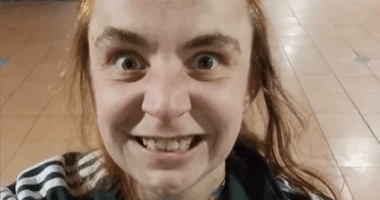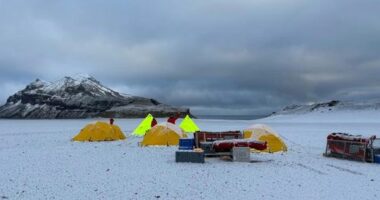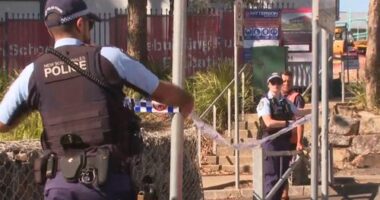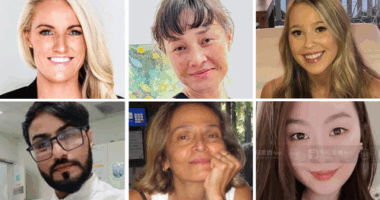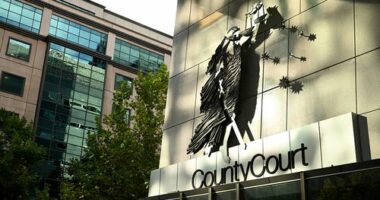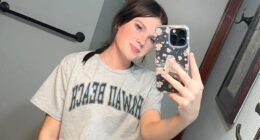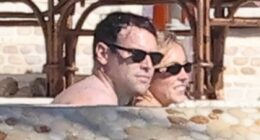Share this @internewscast.com
This is how infant loss was often dealt with in the 1960s.
“Mum never got over it,” Horlock says.
Right until the day she died, she always used to say: ‘I wonder which side of the family he looked like.’
It wasn’t until baby Harding’s older sister, Susan Mead, showed up on Geoffrey Horlock’s doorstep some 65 years later that the connection was finally made.

Susan Mead tracked down one of the siblings of Andrew Horlock, whose grave her baby brother shares, to another small town near where she lives. Source: Supplied
She had come to ask whether she could place a marking on the grave to recognise her brother.
Horlock says once the initial shock passed, he realised there was only one answer.
Finding Baby Harding
Confused, the family contacted Bridgetown-Greenbushes Shire, which manages the cemetery. They confirmed that baby Harding is also buried in the plot, which, according to records, had been divided in two — a practice that the local government has since ceased.
“The Shire is committed to ensuring this information is researched and updated so that descendant family members can search for and locate loved ones,” the spokesperson says.
A taboo subject
The 78-year-old became part of the Older Loss Group about 30 years ago, having lost two infant daughters of her own in the 1970s.

Joan Noonan, (pictured far right) has helped many women, including Lee (second from left), to find their baby’s burial site, years after their loss. Source: Supplied / Red Nose Australia
“In most cases, you weren’t given a chance to have a funeral,” she says.
Noonan says at that time, it was not the “done thing” to question the process. Stillbirth was treated as taboo.
Nobody talked about the death of a baby.
“It’s possible that it was a space issue, or perhaps the cemetery simply didn’t know where to place the baby,” she says.

Co-leader of Red Nose Australia’s Older Loss Group, Fotini Koklas, says while the process of finding a baby’s final resting place should be a healing journey, unnecessary obstacles can make it more emotionally draining than it should be. Source: Supplied
In search of lost babies
“Every cemetery is different, and the level of detail they have in their historical records varies greatly,” she says.
“Over the decades, cemetery management has often changed hands, record-keeping systems have evolved, and unfortunately, some older records have been lost, damaged, or simply never kept in the first place — especially for babies born before the 1980s.”
Inconsistent records
Koklas explains that naming stillborn babies was subject to variation: they could be recorded with their mother’s maiden name or married name, or referred to as names such as: “Baby Smith,” “Stillborn Smith,” or “Baby of Kate Smith”.
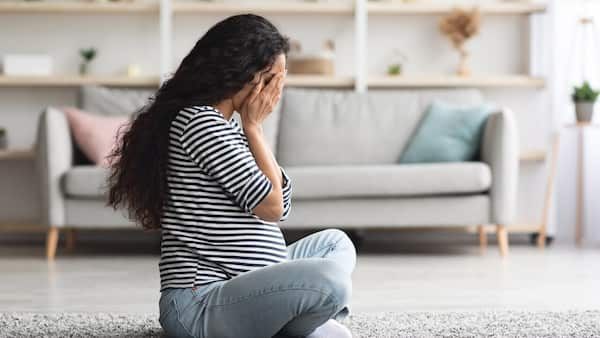
“We’ve developed some records now that show in Victoria what hospitals used what undertakers and then what cemeteries they used and things like that,” she says.
‘Something to be forgotten’
In years gone by, a birth may not have even been considered a birth if the baby was stillborn, so no birth or death certificate was issued. This also meant that protocols around burial fell outside of legal requirements.

Source: SBS News
The statutory instruments and registration practices related to births and perinatal deaths — which include stillbirths and neonatal deaths — have varied between Australian states and territories over the years.
Today, across Australia, a stillborn baby at 20 weeks gestation or more is required to be registered, in most states and territories that will warrant a birth certificate, noting stillbirth.

Source: SBS News
Boyle says burial practices tend to reflect the “prevailing social norm” of the time, and before the 80s “the loss of a baby was something to be forgotten”.
“[It was] not something to be discussed or memorialised.”
Living with the trauma
Horlock still remembers his mother returning from hospital after giving birth without his baby brother.

Geoffrey Horlock’s recalls how his mother was deeply impacted by not only the loss of her baby, but by the process around the loss in not being able to hold her baby or say goodbye. Source: Supplied
He says she spent days sitting by the wood fire stove in their kitchen, just staring at the fire.
“I am so grateful I got to hold my babies, name them and make funeral arrangements for them,” she says.
A healing process
“Finding a baby’s final resting place is one of the most healing and powerful experiences … it’s something that goes beyond words, like a heavy weight being lifted.
It doesn’t mean they’ve ‘moved on’ — because grief doesn’t work that way — but they feel like they can now live again, just a little bit lighter.
She encourages anyone needing help in their search to reach out, saying: “it’s never too late”.
Geoffrey Horlock says he and his siblings decided to place a headstone on the grave a number of years ago after both their parents had died as a way to honour their mother.

Arrangements are being made to have a plaque placed on the lower part of Andrew Horlock’s grave to acknowledge it is also the grave of ‘Baby Harding.’ Source: Supplied
He says his mother would have loved for that to have happened in her lifetime.
“That finished it for us; it put some closure on Andrew. So if there’s another baby buried there, it’d only be fair that we let them do that too.”

